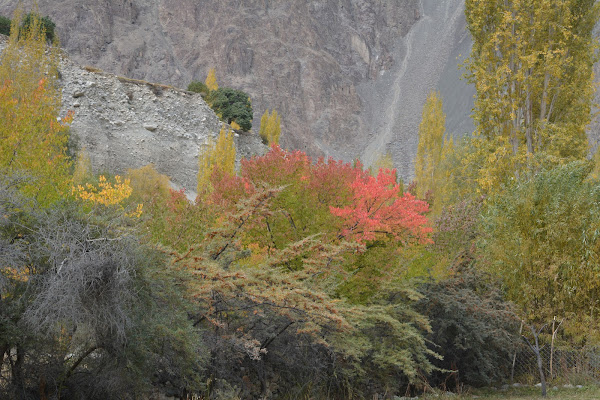"Education is an ornament in prosperity and refuge in adversity" - Aristotle
"The smallest act of kindness is worth more than the grandest intention." ~ Oscar Wilde
Volunteering isn't anything like that old cliché goes - "contributing or paying back to the society". It is way different from what a commoner thinks. Volunteering soothes the soul bringing comfort, solace and reassurance to the one who puts forth all the effort, synchronising the mind and the heart and connecting for the cause.
I’d been teaching in my younger days before taking up a job in the school text publishing industry, working with publishers of repute for over a quarter century, and interacting with 500 plus educationists serving in institutions across more than a score of cities spread throughout India. Volunteering is something that I did for the first time only after getting motivation from my cinematographer daughter and my nemophilist and environmentalist soulmate, a professor of Liberal Arts teaching undergraduate classes on environment, gender, policy and social service and who reveres nature, believing that interconnectedness with ecology sources human life. My octogenarian mother sponsored my first travel to Turtuk in Ladakh and braved staying alone in the sweltering summers of Chandigarh.
Volunteering, in the cold desert of Ladakh, warmed my heart and soul. I flew from Chandigarh to Leh and travelled to the highlands of the lush, green, tiny Balti village of Turtuk, beyond Nubra Valley, which has its rare charm. A small hamlet just a few miles from the Line of Control between India and Pakistan, Turtuk Valley is nestled between the high Karakoram Mountains and River Shyok. Shyok flaunts its serene blue waters, flowing silently in October through April but is called the river of death for the ferocity of its muddy grey waters gushing down from the melting glaciers for the remaining year.
A tedious 208km drive from Leh to Turtuk takes about eight hours. It leads one through the 18,000 ft. high, mighty Khardung La and further descending down the steep mountain road, zigzagging to the grey dunes of Nubra Valley and finally reaching Turtuk located on the left bank of the Shyok River at an altitude of 9,000 ft.
Khardung La
Surrounded by high crumbling rock faces, Farool and Youl are the two small hamlets of Turtuk, sitting on separate cliffs at an altitude of more than 9,500 ft. above sea level. The twin hamlets are bridged by a green wooden suspension bridge, built over a water stream that is the lifeline of the people here. However, this lifeline turns into a trickle, frozen rivulet during the winter months of January-February when temperatures dip to minus 15 to minus 25 degrees Celsius.
The smile on his lips fades, and his eyes become sad, recalling the sombre days of penury before 1971 when the village hardly had any medical facilities and education was at its lowest, with just two teachers posted who were not present for months together. He, then a young lad of 16 or 17, with his laden donkeys, accompanied the soldiers to high-altitude border posts, and in the process earned a living. His eyes scintillate, and his lips curl upward into a radiant smile as he talks of the present, with government jobs for every household, jobs in uniform, health, education, and other departments.
I walked into the verdant valley of Turtuk barley fields - the only grain grown in summer - filling the tummies of families of natives and sightseers alike till the next harvesting season. Delicate but sour cherries, delicious apricots, majestic walnuts, and the old and handsome juicy mulberry trees are a feastful sight and add to the local economy.
The entire family puts in labour to nurture a kitchen garden. A few families even maintain greenhouses and nurseries for vegetables. Cauliflower, cabbage, carrots, brinjal, bell peppers, spinach, mustard, green onion, beans, broccoli, lettuce, tomatoes, beat root, etc. are grown here.
The fields are irrigated with a Kuhl, a community-managed traditional gravity flow irrigation system, to direct water from the natural running stream. The months of June, July, and August are abundant with nutritious vegetables. A sizable portion of these veggies is dried in the humidity-free climate of Turtuk to last through the chilly winter months when the temperatures drop to 30 degrees Celsius below zero.
Turtuk’s altitude also helps to plant buckwheat in August end or September beginning and harvest it just before the fall.
The willow tree has been growing here since time immemorial – its young and slim branches decorate the ceilings of stone and wood houses. The tall poplar trees' trunk is used to support six to eight-inch thick mud roofs but only to deplete the fertile land of its water table.
Teachers and volunteers on the Green Bridge
Sarah's team of young Balti teachers is entwined with compassion and empathy to nurture the kids of Turtuk. Zainab, Rubina, Hajira, Sayeeda, Tahira, Nazia, Hamida, Naima, Aina – as their names rhyme, so do these young ladies gel with one another and students, making education effective. The tea cups and lunch boxes are full of laughter. The daily potluck lunch gave me the opportunity to barter my standard spinach tiffin with eggs, chicken, brinjal, potatoes or carrots. The school helpers – Asiya, Khatija, Sayada and Kharun, are all agile and caringly catering to the needs of kids and staff and helping volunteers with their luggage to the homestays and taxi stops during chilly morning hours.
morning assembly at school
Today, a school with 100 plus students and growing is catering the society with better education standards and truthful ethics. The endeavouring effort of Sarah and the team has carved a niche and earned a philanthropic school ranking of number one in Ladakh and seventh in India.
To be at par with present education, the school needs trained teachers, but it is difficult to get permanent educators to work in such a harsh terrain. So the school offers volunteerism to people who want to make a difference. To keep the school free of bias, applicants are short-listed not just based on their education and experience but mainly on their attitude and behaviour. Volunteers come from different walks of life, irrespective of their backgrounds, professions, or ages. The common thing that ties them together is love for humanity and mutual respect. This unique bond holds them together for a long if not a lifetime. They are dedicated to working collectively for the cause. Fortunately, there are plenty of genuine people to help each other.
During my two-month summer tenure of volunteerism, I met a few interesting people, and most of us are in touch and keep asking about the next trip to Turtuk.
Yash Raj, an enthusiastic and bright young maths wizard of 23 years, before starting his career with Wells Fargo, came from Lucknow to volunteer at Turtuk and earned loads of love. A born leader, besides teaching, he took the initiative to organise a sports day, a quiz competition, and wall painting, leaving his mark not only on the school wall but also on the hearts of students, fellow volunteers and school teachers. The village elders, school staff and students arranged a farewell in his honour and we all bade him a heartfelt adieu. Goodbyes are painful only if we are never going to meet again, but of course, we were destined to dine and chat over a cup of coffee in Bangalore where he works now.
Tanvi Pisolkar, an engineer, took a sabbatical from her job in the United States and came to Turtuk before going to London to pursue her second master's and a Ph.D. Her mornings started with a strong aroma of the filter coffee. Slowly and steadily, with a firm foothold she used to tread like a tigress on the narrow bumpy rough trails of the village to reach school. She made it a point to relish the standard spinach lunch till the last bite, removing her invisible braces. Teaching is her passion, and dancing is a gift. She choreographed a dance with 5th and 6th graders, on the title song from the famous movie "Rang de Basanti", for Independence Day celebrations. Unfortunately, this could not happen because of Muharram week.
Namita Kilam, a special educator with a world school in Delhi NCR is born to teach. She's a teacher trainer who knows her phonetics with short and long sounds. Love for the kids and passionate about her work, this Kashmiri doodle artist, supporting a tattoo on her neck in the Kashmiri language "LAAKM RUSTI GUR", meaning "horse without reins", is fond of her books and hooked on crocheting in her free time. She was a bit scared to climb the crumbling stones on the rocky terrain of Turtuk when we first met in the summer of 2022, but enthusiastic as she is, she gathered all her strength and stamina in her composure to scale the new heights of adventure. The next time we met in autumn, I was flabbergasted to watch her climb a rock inclined at an angle of almost 60-65 degrees in Kharpanthang village on the right bank of Shyok, all on her own without any support. She made friends easily and talked like a chatterbox, full of sense and emotion.
On a not-so-warm but scorching sunny morning in June's first week, with fresh snow on the peaks surrounding Turtuk, the four of us went on a day excursion – a hike up to the Turtuk waterfall, scaling a height of 10,500ft. – and after about an hour’s hike, found ourselves resting on a cliff with a mosque overlooking the village, a green and yellow canvas painted by Mother Nature – the beauty of nature at its best.
Relaxing on a cliff at that altitude, we took in the views of even higher peaks behind us, the picturesque village down in the valley, and the rugged, jagged enormous mountain rising from the waters of Shyok in front of us. Crawling and ducking under the protruding rocks and bends of the rough and unnerving one-foot-wide mountain trail was quite a thrilling experience. It was refreshing to arrive at the waterfall.
A school picnic on a pleasant, warm day in May last week was simply delightful. Little ones were giggly and happy as they joyfully got onto the bus with the help of teachers who were also decked up in colourful ‘VIBGYOR’ attire. Boys dressed in black, blue, and red leapt and hopped over the little rocks with joyous feet while lasses dressed in pinks, orange purple, yellow and violet delicately made their way along the path obscured by weeds and pebbles while carrying their small handbags.
A few kindergarteners filled their tiny, colourful buckets with water from the tiny stream that ran through the grounds and dumped it into neighbouring pits while the others were hula hooping.
It was lunchtime, and their bags began zipping open with tiffins, chips, candies, chewing gums, chocolates, juices, and water bottles popping out. The children, eating their meals properly while sitting down and without getting into any mischief was a wonderful sight. That is what education is really about – not merely the books on the curriculum.
Another evening, another trail through the fields, walking on the edges of barley fields, climbing the hill to find our way on the rolling stones, helping each other, especially Tanvi Thakore from Bombay, who had ventured out of her cosy home and left her hubby Jigar for the first time to explore herself with the kids of Turtuk Valley School. On her first day, she got the shock of her life when she had to climb the most difficult terrain ever; almost in tears, she shrieked with joy when we found our way into the fields – Ah! What a relief! – was an expression on her smile. And after a few days, when some of her friends came to visit Turtuk, she described how she guided the group with a full gust of enthusiasm, running ahead, vaulting over the rocks and the streams, impressing them and herself.
Manju Mathew, a special educator with a global school from Bombay, joined the volunteer community in June. She was indeed a quiet person who enjoyed sitting on a cliff in the kabristaan and observing the empty horizon and passing of time as everything ceased to exist. She liked Turtuk so much that she wanted to live there for a while and work as a teacher.
While she stood embracing and hugging an old tree with a twisted hollow trunk, supporting new offshoots from its roots, her love for old trees could be felt in her eyes and gesture.
Maneesha, who runs a yoga retreat in Nilgiri hills in the south and spends her vacation trekking in the Himalayan mountains, came to Turtuk for her first time to volunteer. It was a fortunate coincidence that she was present on International Yoga Day, on June 21st, and we were able to commemorate it by having children performing various aasanas under her guidance.
Visit to the monastery, sited at a cliff just above the fields, offering a bird's view of Farool towards the left and the graveyard on the right, became almost a daily ritual.
Monastery sited on a cliff
A large carpeted room decorated with khatas – traditional ceremonial scarf in Buddhism – tied to the carved, round wooden pillars holding the roof; fresh marigold flowers floating in small water bowls on the alter with butter lamps lit reflecting serenity and peace in the eyes of Dalai Lama portrait; once an Indian Army post, now a monastery is being taken care of by Yudol, a Buddhist lady who lives in Turtuk for the last twenty years and teaches in Army aided school in Tyakshi village five kilometres from here.
Yudol at Monastery
She visits the monastery twice a day to perform all the rituals, clean the place, water the flowers she has planted there and light the butter lamps symbolising the banishment of the darkness of ignorance.
The butter lamps and flowers
Walking through the village trails on the cobbled, narrow lanes of wood and stone houses, stopping by the natural cold storage in the hollow rocks to breathe in the cold air, and wading through waist-high barley fields along the irrigation water canals up till the third bridge, as we named it, was really enjoyable.
Sitting on the bridge – a few planks nailed to two robust wooden logs from the trees thrown across the stream – with legs dangling, trying to reach the gushing water beneath, until late evenings, or at other times, hopping on the water-trimmed rocks in the streams, clicking selfies or just sitting quietly; was like unwinding after a long day at school.
No one prepares Samosas in Turtuk, so we chatted as we trekked five kilometres to Tyakshi village, down the left bank of Shyok to try our luck at Chachu's shop. We didn‘t get any samosas, but we sure made the trip a memorable one. On the way back, we crossed an ageing suspension bridge over the river connecting Kharpongthang, the winter abode of natives of Tyakshi village, to see the apricot orchards. Muhammad Ali, a local government school teacher, at the village entrance, greeted us and invited us to his place at the hilltop summer hamlet of Tyakshi.
The school staff and we volunteers joyfully loaded ourselves in Abdulla Mukhtar's pick-up for a ride to the border village of Thang. Thang, the first border village from north of India, is separated by its twin village Pharnu which is a mere half-hour walk away on the other side of the fence. The sad stories lie in the hearts of natives – families separated overnight – in the bitter cold of December 1971. Tourists flock to Thang and suddenly become patriotic, raising slogans - Bharat Mata Ki Jai with the Tricolour in one hand while scattering wrappers and water bottles from the other. A visit to the zero-point, courtesy of Tanvi Thakore with her army connection, was a telescopic experience viewing half a dozen high-altitude posts of Indian and Pakistani armies.
 |
| volunteers and teachers atop a pickup |
'Hunger Strike' a beautifully designed café with floor seating became our favourite. A young Ali Hussain won our hearts when he refused to bill coffee on the inaugural day of his café. Hanging at the café till late evening became our daily routine. Bwosing the internet while chitchatting over a piping hot coffee or steaming honey lemon tea, sizzling pakoras, or chow mien was another reason to sit.
Hanging out at Hunger Strike Café
Anwar Ali, a government school sports teacher, with a good eye for archery and a poet by heart, became another good friend. He was all smiles to load the six of us in his not-so-spacious car and a generous, warm heart and drive up to his native village Pachathang, a beautiful hamlet atop the hill, laden with Apricot trees and luxuriant barley fields.
Shy of the camera, Anwar recited his shayari while hiking the hilltop where an old school building stands abandoned after Covid, of which Pakistan administration had constructed two rooms before 1971.
The school building with two rooms on the left, constructed by Pakistan before 1971
Enthusiastically he explained the local terrain and pointed out the different peaks under the control of Indian and Pakistan Armies on the same mountain range. The trail joining the hilltop of Pachathang with the hamlet of Tyakshi at an altitude of almost 9,700ft is an easy level walk to Muhammad Ali's home, who warm-heartedly welcomed us at his newly constructed home and served walnuts, dry apricots and tea. And amidst all, Anwar patiently waited for us at the parking of Tyakshi village to drop us back home.
Turtuk is incomplete without a visit to the Balti Heritage House and Museum owned by the Ashour family. The elders of the Ashour family in their older days used to help the needy villagers with food grains when the yield was not sufficient to feed their families.
The larger part of the family home, a hundred-and-fifty-old sprawling stone and wood house, is a museum – wooden rooms with low-height ceilings and very small doors and much smaller windows to keep the place warm and cosy during long and chilly winters. The gaps between the wooden logs are sealed with apricot paste to avoid cold air blowing in the rooms.
The traditional, century-old sheepskin clothing and footwear are preserved with much care and respect. The age-old kitchen with the chulha and the wooden leather bag made of sheep skin to pump air for lighting fire is displayed as if it is ready to use. The vintage large stone cooking pots, traditional copper urns and other utensils such as samovar to make and serve the nun chai are a beauty. Hajira Bano, ever smiling, younger daughter of the family holds a master's in Urdu Literature from Hyderabad and is committed to Turtuk Valley School, teaching the kids besides helping Sarah with other logistics. With much love, she laid out a lavish Dastarkhwan in our honour. Her brother, a civil engineer is constructing a new house for the family with walls plastered with apricot jelly kneaded in clay and barley husk to keep the rooms insulated from the extreme hot and cold.
An invite from Sayeeda, another young local teacher, was all welcome. The wall-to-wall plush carpeted floor that surrounded the Baithak, the wooden panelled walls, and the heavy curtains drawn on the wooden windows, all spoke of an affluent but humble family. The traditional Balti dish of Kisir (fluffy and soft pancakes of buckwheat) with Moskot (walnut sauce blended with local herbs), farm-fresh cherries, dry apricots, and walnuts spread out in traditional utensils, served with the nun chai (pinkish salted tea) in small stone bowl-like cups poured with love, was very refreshing in the June heat.
In spite of the approaching winters and frigid cold of 5 to -5 degrees Celsius in October, my second stint was a month’s worth, filled with the warmth of love and affection. Given that the academic year was coming to a close, I couldn't refuse Sarah's invitations to visit the school and tutor the students.
The beauty of diversity is when one is blessed with love and affection on Diwali Mubaarak when Zainab, a trustee at Teach for Ladakh, who helps Sarah with administration in addition to teaching maths, greeted on Diwali morning with a bowl full of sweet seviyan “Kheer”. My class 6 students presented a handmade beautiful Diwali card. I was overwhelmed with emotion.
It was the most gratifying Diwali ever. Khaleek, Sarh's soulmate invited me to accompany the students to the Gore Post of the Indian Army. Atired in the crisp school uniform the kids were cheerful as we drove up to the altitude of above 12000 ft. to gleefully greet our Jawans. Joyfully, the soldiers reciprocated Diwali greetings, warmly accepting the handmade Diwali cards and distributing sweets to the kids. It was my first experience exchanging greetings with the Army on the festival of auspicious Diwali.
Meeting Namita again at Turtuk during my second tenure was indeed pleasant when she visited the school during her autumn break for a week. We both trekked to Kharpongthang, crossing the loosely dangling rope bridge over the silent and crystal clear winter Shyok to witness the mid-October fall. It is indeed mesmerising with its myriad colours. Falling leaves from apricot trees turn from all shades of green to vivid orange before covering the ground with bright yellow and finally curling dry into beige. The fields were covered with golden yellow leaves and the trees were laden with all shades of orange leaves.
Turtuk during Autumn
Without a heartfelt eulogy for our dearest Shifiqa, whom we lost to the cruel hands of death in September '22, this experience will remain incomplete. Caring and soft-hearted Shafiqa, of Turkish descent, as it seemed from her features and appearance, was among the first to support Sarah in this endeavour. Her kind, loving, caring, affectionate, warm heart made her the favourite among the tiny tots in nursery classes. I was touched by her empathy when a window iron net swung open on my forehead, scratching it, and she was up on her toes to nurse the injury and put a medicated bandage on it. She was so concerned that she called twice in the late evening to check my well-being.
I wish Sarah all the success in her endeavour towards a path of self-confidence, self-belief, and receiving recognition and support from all to continue her journey through the passageways of growth. And trust me she's been doing everything she can to create an amazing and inspiring experience for volunteers – you won't regret, joining her in this noble cause.
Chaitan Bedi
9872814169
chaitanbedi@gmail.com

























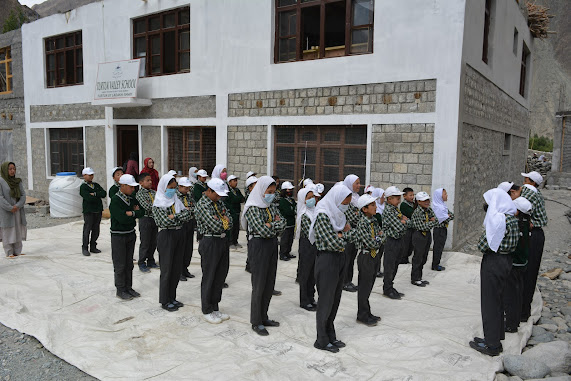













.png)
.png)





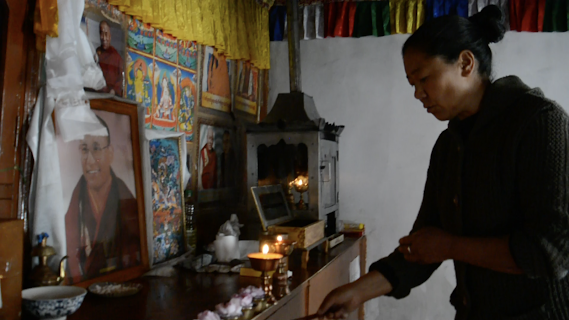


.png)
.png)



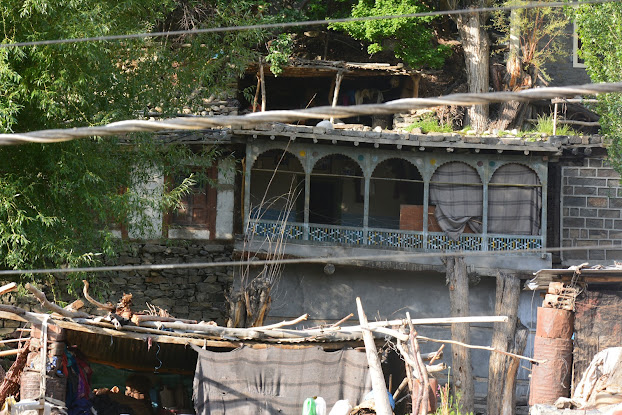





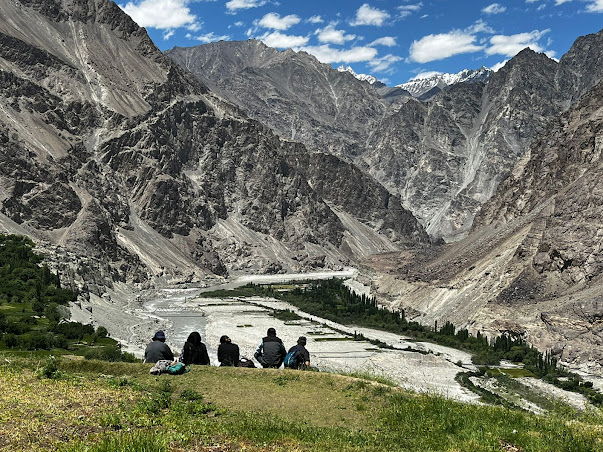
.png)















